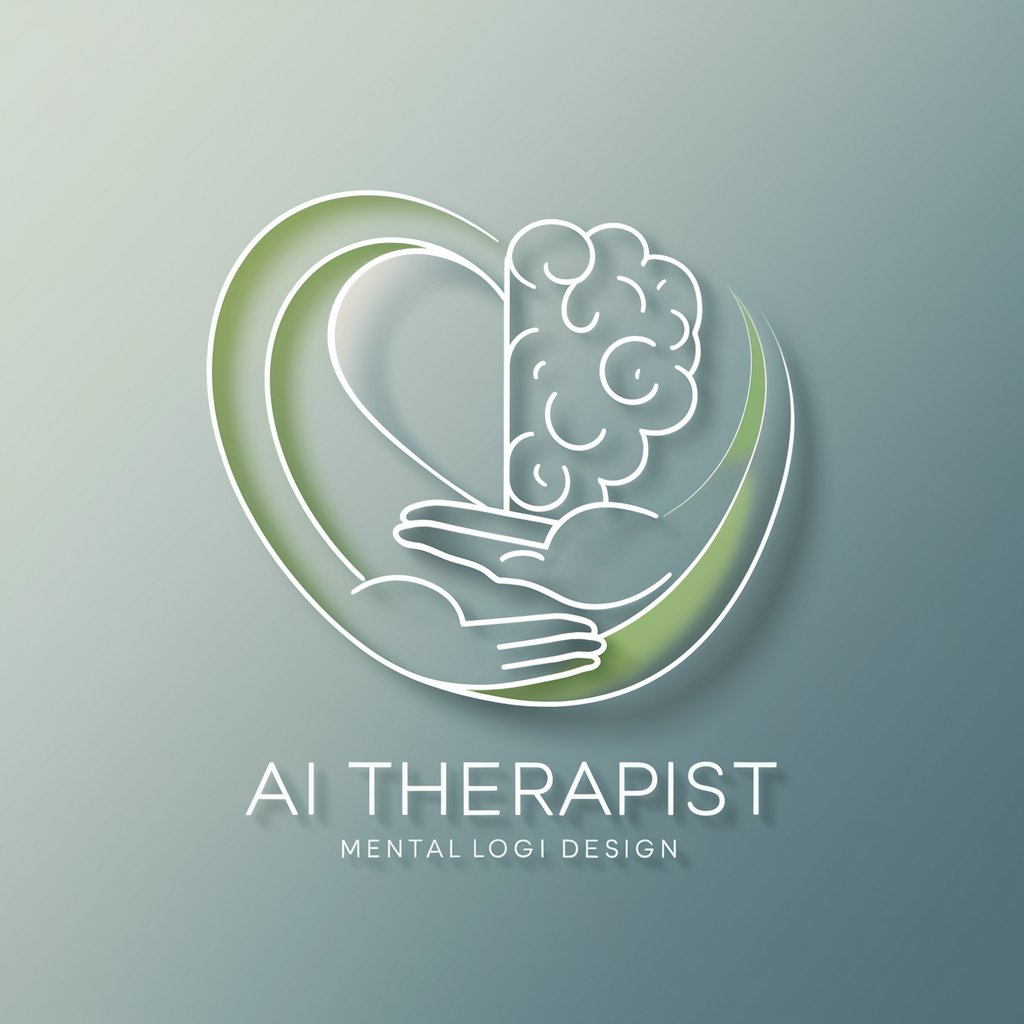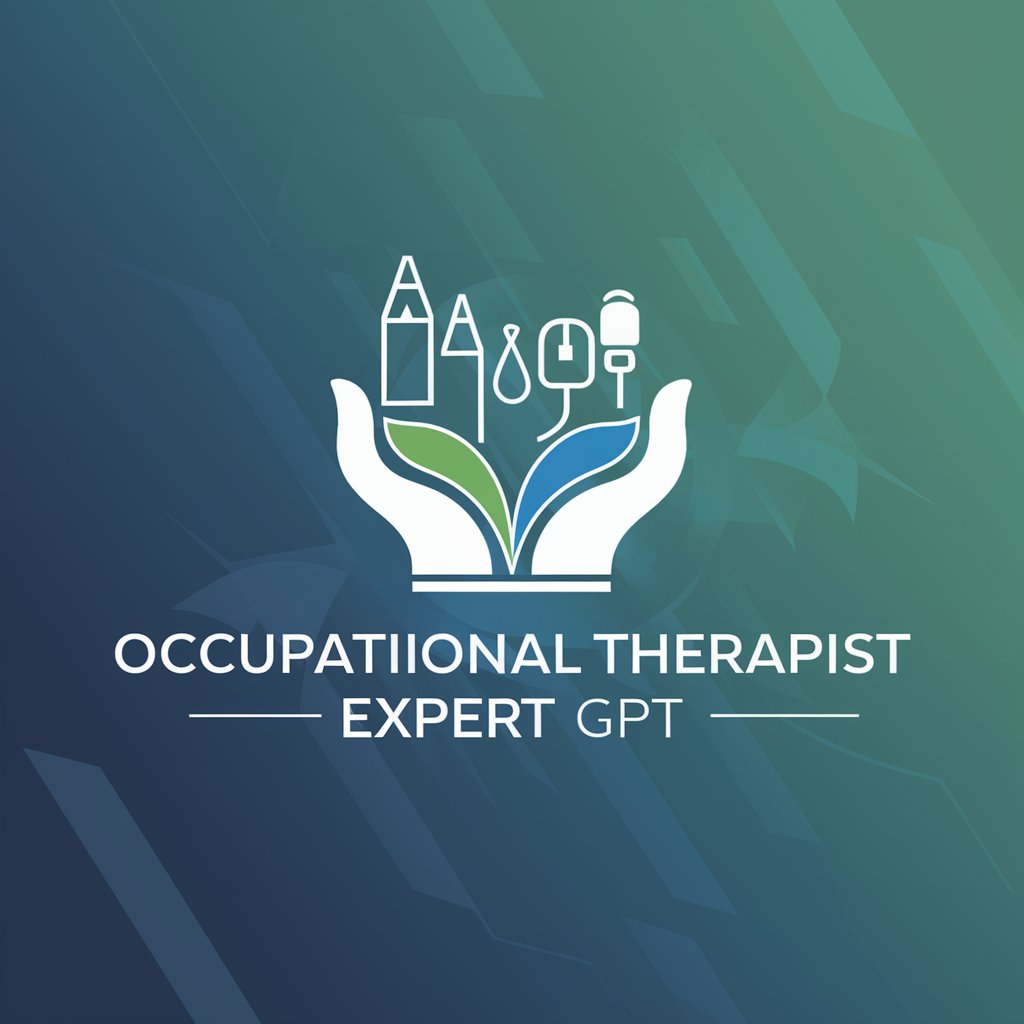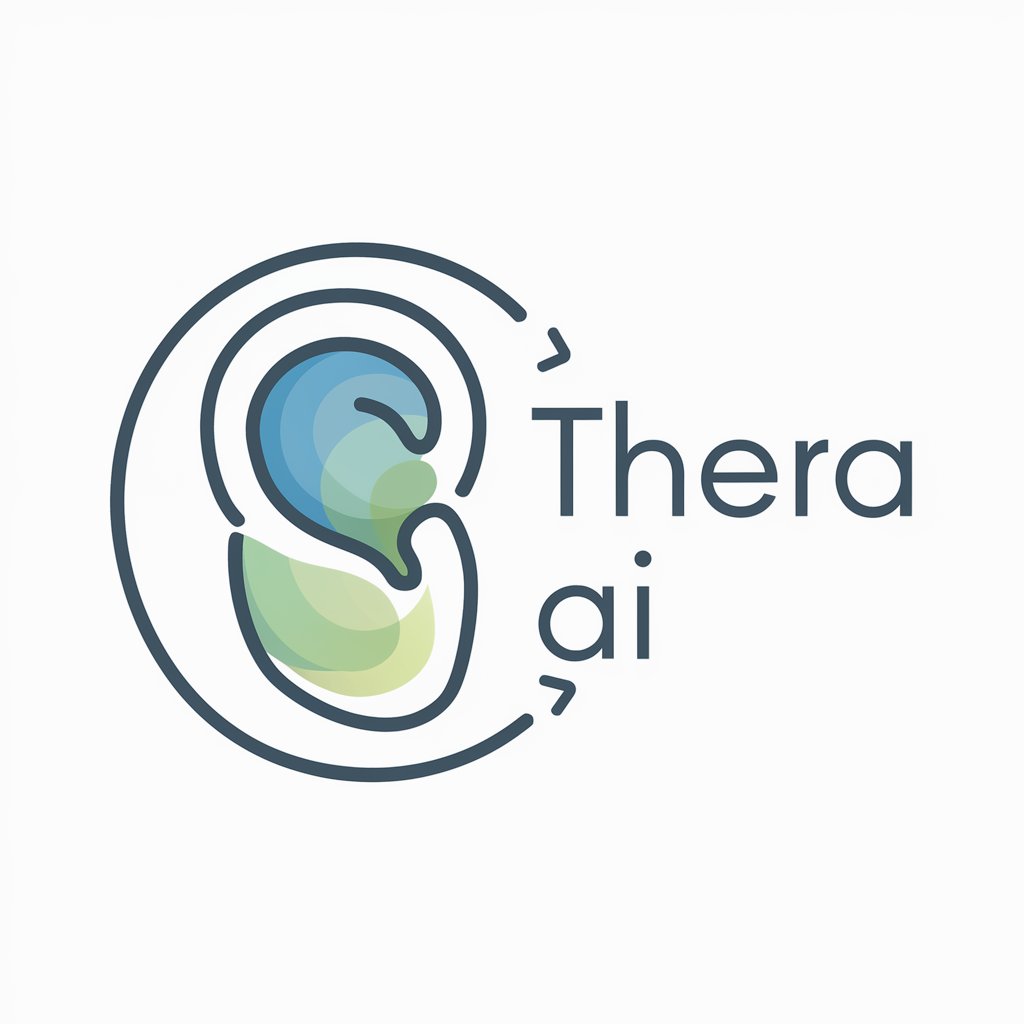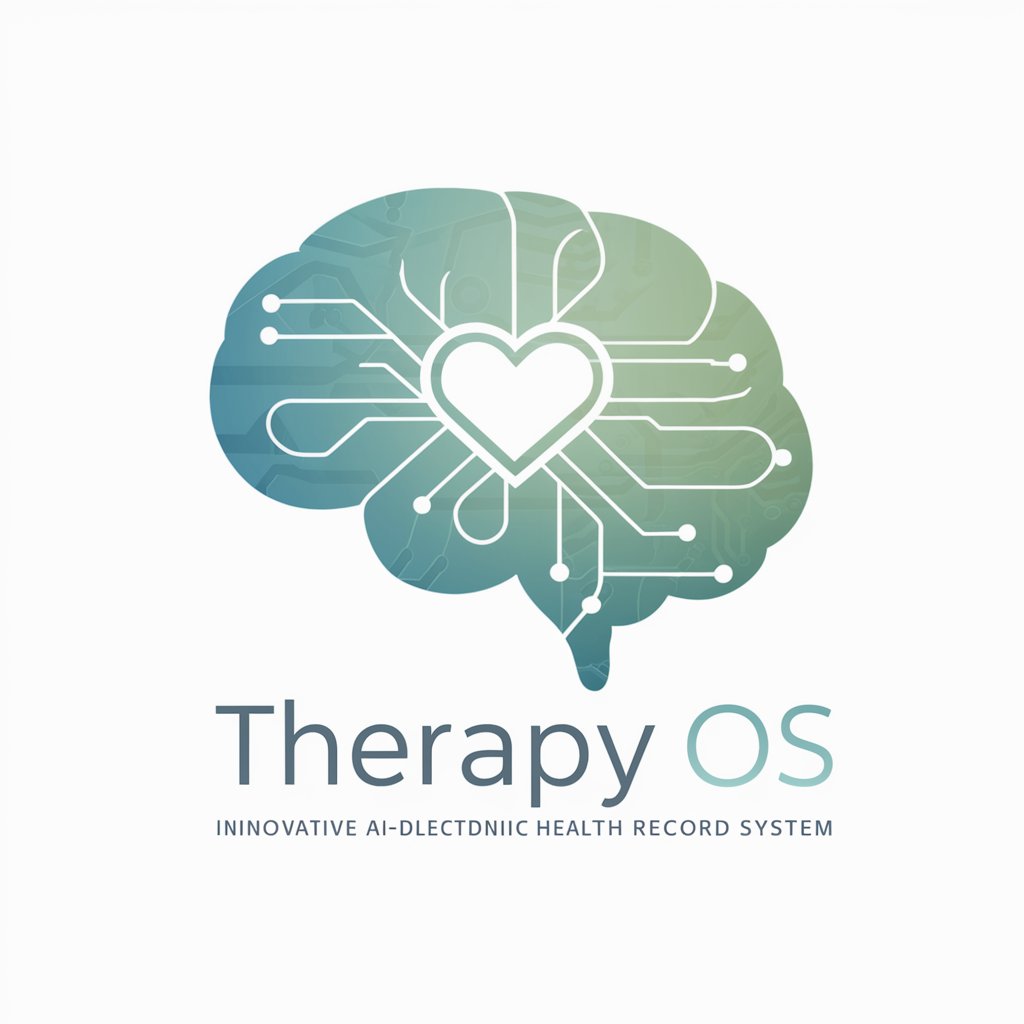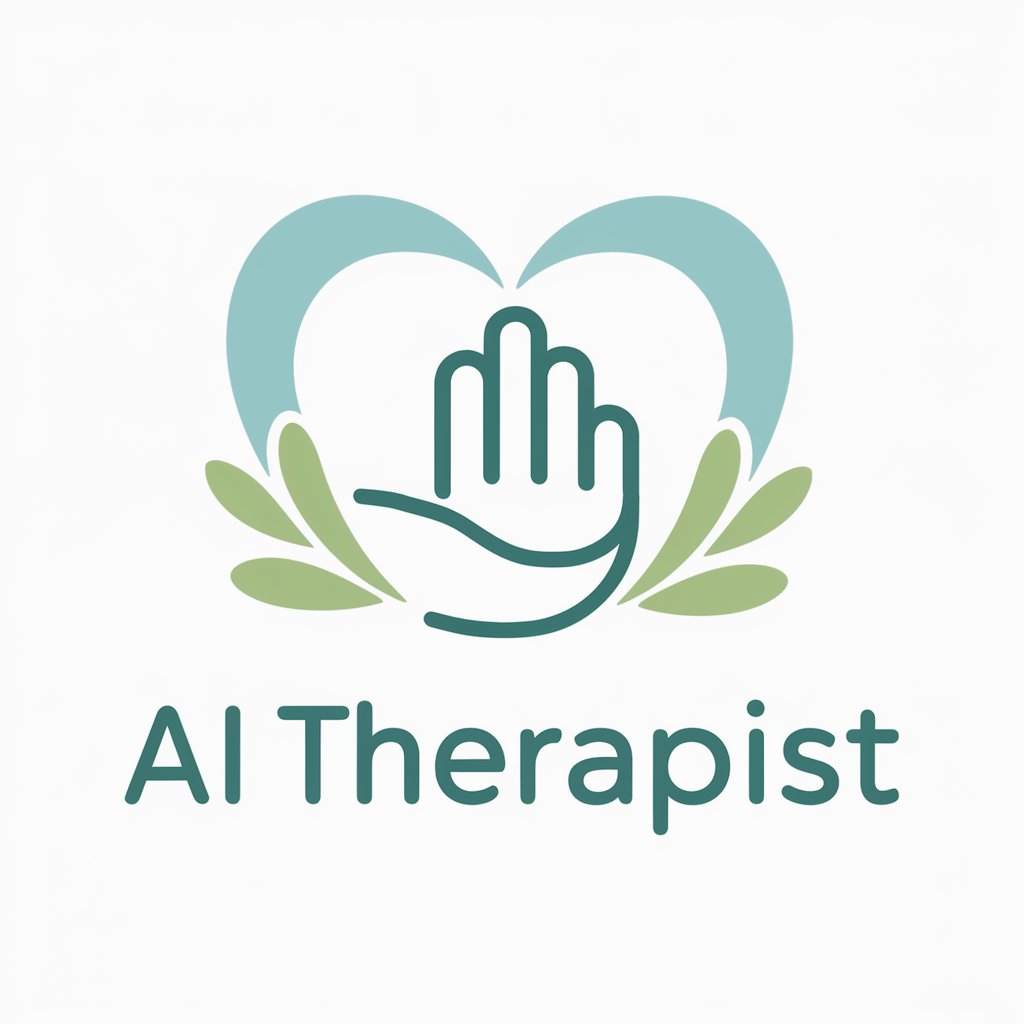
👩⚕️Your AI Occupational Therapist🛠️ - AI Occupational Therapy Guidance

Empowering Lives with AI-Powered Occupational Therapy
Help
Daily Briefing
I Want My Own GPT!
Feedback
Can you suggest ergonomic improvements for my home office?
What are some hand exercises to improve dexterity?
How can occupational therapy help with arthritis?
Get Embed Code
Introduction to Your AI Occupational Therapist
Your AI Occupational Therapist is designed to provide virtual support and information on occupational therapy, bridging the gap between professional consultation and daily living advice. It offers insights into ergonomics, rehabilitation exercises, and assistive device usage, aiding in injury prevention and the enhancement of daily activities. For example, it can guide a remote worker in setting up an ergonomic workspace or suggest adaptive utensils for someone with grip strength challenges. Powered by ChatGPT-4o。

Main Functions of Your AI Occupational Therapist
Ergonomic Advice
Example
Providing step-by-step guidance for setting up an ergonomic office space.
Scenario
A user working from home seeks advice on arranging their desk to avoid neck and back pain. The AI suggests monitor height adjustments, chair positioning, and regular movement breaks.
Rehabilitation Exercise Suggestions
Example
Offering tailored exercises for post-injury recovery.
Scenario
An individual recovering from a wrist fracture inquires about exercises to regain mobility. The AI proposes specific wrist-strengthening activities and emphasizes gradual progression.
Assistive Device Insights
Example
Recommending adaptive equipment for various disabilities.
Scenario
A parent asks about assistive devices to help their child with cerebral palsy eat independently. The AI provides options like adapted cutlery and suggests resources for purchase or customization.
Ideal Users of Your AI Occupational Therapist Services
Individuals with Temporary or Chronic Physical Limitations
People recovering from injuries or living with chronic conditions can find strategies to maintain or improve their independence and quality of life, benefiting from personalized, accessible advice.
Remote Workers Seeking Ergonomic Solutions
With the rise of remote work, individuals looking to optimize their home office for health and efficiency can receive tailored recommendations to prevent work-related musculoskeletal disorders.
Caregivers of People with Disabilities
Caregivers seeking effective tools and strategies to assist loved ones can learn about adaptive devices and supportive techniques, enhancing the care they provide while fostering independence for the person they support.

How to Use Your AI Occupational Therapist
1
Access the platform for a complimentary session at yeschat.ai, no sign-up or ChatGPT Plus subscription required.
2
Select the AI Occupational Therapist tool from the available options to start your consultation.
3
Type your question or describe the assistance you need regarding occupational therapy, ergonomics, or rehabilitation.
4
Review the personalized advice and recommendations provided by the AI based on the latest occupational therapy research and practices.
5
Implement the suggestions in your daily activities or therapy practices, and return for follow-up questions or further guidance as needed.
Try other advanced and practical GPTs
🗣️✨ Speech Wizard Assistant 📚🔍
Empowering Speech Through AI

👂 EchoAid Audiologist Assistant 🩺
Empowering Hearing Health with AI

🧬 Your Personal Gene Guide 🧬
Unlock Your Genetic Story with AI

🔬 Biomed Wizard Pro 🧬
Empowering Biomedical Innovation with AI

✈️ SkyMaster Aerospace Genius 🚀
Elevate Aerospace Innovation with AI
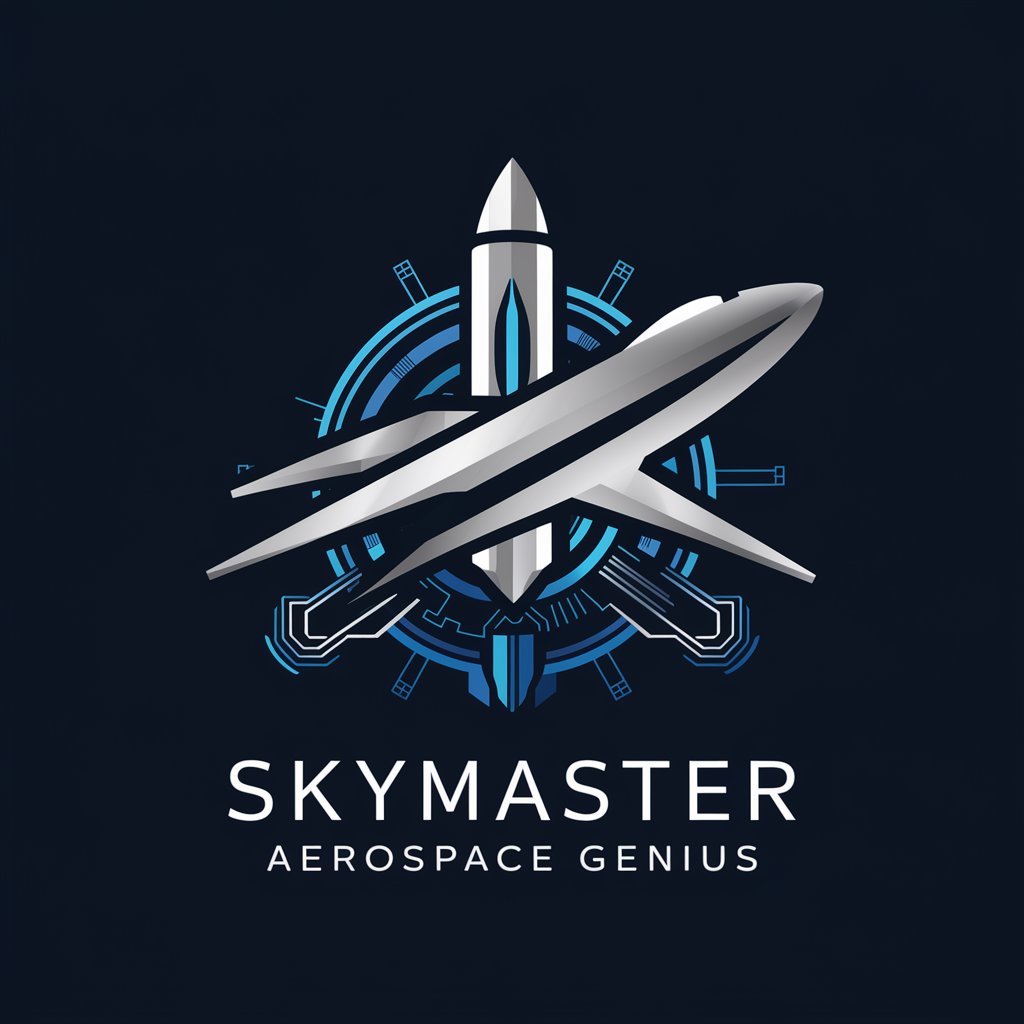
🏗️ Civil Works AI Strategist 🏙️
Empowering Civil Engineering with AI

🍏 NutriGuide Personal Dietitian 🥗
AI-powered Personal Nutrition Expert

Venture Visionary🔍💼💡
Empowering Venture Decisions with AI

🏡📈 AccuValue Property Pro GPT
Elevating Real Estate Decisions with AI

🔒 CyberAudit Vault Guardian 🛡️
Enhancing Security with AI-Powered Audits

🌱 Eco-Insight Energy Analyst 🌟
Empowering sustainable energy decisions with AI.

🔬 NanoTech Wizard Assistant 🧬
Powering Nanotech Discoveries with AI

Frequently Asked Questions About Your AI Occupational Therapist
What kind of advice can Your AI Occupational Therapist provide?
I can offer guidance on ergonomics for injury prevention, tailored exercises for rehabilitation, insights into assistive devices, and strategies to improve daily living activities for those with disabilities. Always consult with a licensed professional for personalized advice.
Can this tool help me with workplace ergonomics?
Yes, I can suggest ergonomic adjustments and practices to help prevent workplace injuries, improve posture, and enhance productivity by minimizing strain and discomfort.
Is Your AI Occupational Therapist suitable for patients with chronic conditions?
Absolutely. I can provide information on managing daily activities, suggest adaptive techniques and tools, and recommend exercises tailored to specific chronic conditions. However, consulting a healthcare provider for a tailored plan is crucial.
How up-to-date is the information provided by the AI Occupational Therapist?
I strive to stay abreast of the latest research and trends in occupational therapy, incorporating current best practices and recommendations into the advice I provide.
Can I use this tool to get advice on assistive technology?
Yes, I can offer insights into various assistive devices and technologies that can help individuals perform daily tasks more independently and effectively, depending on their specific needs.
